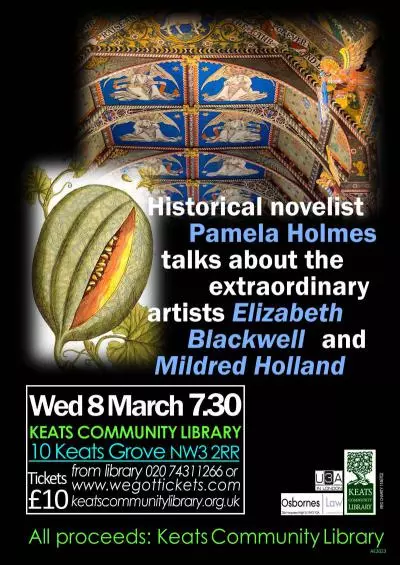Women writers versus painters?

OK, so it's not a battle. But I've explored this argument in the current issue of The Female Spectator (published by Chawton House Library www.chawtonhouse.org ), that however tough it was for 18th century women to write, it was that much more difficult for women who wanted to paint. Pen, ink and paper were likely to be available in households of a certain income bracket but acquiring paint and the tools and materials to apply it required money. When I think about the woman in my book, Mildred Holland, who climbed up 70 feet on to a scaffolding to apply gold leaf to carved wooden angels, it's clear this Victorian vicar's wife had been able to persuade her husband to part with quite significant sums of money for paints, brushes, paper, nails, ladders and so on as well as being physically brave. In addition, she must have had a healthy disregard for social convention since painting ceilings was not something that women did, yet Mildred created the medieval ceiling that can be seen today in St Mary's Church, Huntingfield.
Dr Emma Barker, Senior Lecturer in Art History at the Open University, talked about this issue at a lecture at Chawton House Library earlier this year. During Jane Austen’s lifetime, she said, women were largely excluded from the institutions of the art world. Only a few succeeded in making a career and a name for themselves such as Angelica Kauffman, a founder member of the Royal Academy and the French painter, Elisabeth Louise Vigée Le Brun. But examples are limited. Even if a woman succeeded in gathering the resources to paint, it was most likely that her work would be ignored by others or remained in the domestic settings.
Women were not considered to have the ability to paint anyway. John Ruskin wrote in 1848 to one young woman, Miss Simmet that: 'You must resolve to be quite a great paintress ; the feminine termination does not exist, there never having been such a being as yet as a lady who could paint. Try and be the first.'
If this is the prevailing attitude, no wonder Mildred Holland and other painters before and since have been ignored.
What's not in dispute is this: all women artists have to be driven to succeed in whatever area of the arts they choose to express themselves. It remains the case today. Women need confidence, energy and persistence to handle the negative social expectations, derisive attitudes, self-doubt, work and domestic responsibilities they face. So it's not about 'who had it hardest'. Let's celebrate and foster women artist's responses to life, love, beauty and death in every sphere.
The Female Spectator is a quarterly publication with articles on women writers (1600 - 1830) and their work as well as news about activities at the Library. It's named after Eliza Haywood’s publication of the same name, the first magazine by and for women.


















